SEGA SATURN AREA | HISTORY FEATURE

The sombre story that is the SEGA Saturn - a console whose undeserved downfall was eclipsed by the downfall of the company that created it.
As SEGAs internal troubles raged on, by the time certain people in the company realised what was going on, it was too late - a situation the company would not recover from for over 10 years.
This played out backdropped against one of the most turbulent and revolutionary times in gaming history: The move to 32-Bit.
Yet for all the problems the system faced, it continues to remain as one of the most cherished by its fans proving the hardware and its treasure chest of games were not enough reason it did not command a bigger role in the oncoming gaming revolution.
Inception
The origins of the Saturn project date back as far as the Mega Drive/Genesis sometime in 1993. SEGA had actually put their 32-Bit projects on hold to see how their initial venture of putting games on CD-ROMs would transpire. This was of course the Mega-CD/SEGA-CD where some valuable lessons were learned – but at a price.
Much had changed since the Mega Drive/Genesis had been designed for both the gaming industry which was going through a revolution, and at SEGA itself. The other two branches; SEGA of America was a tiny distribution point and SEGA of Europe did not even exist. 16-Bit success made both branches experience rapid growth. And moreover, by this time, differing ideas of the next console.
Saturn went through a few design specifications. SEGA followers may know these as The Planets. Another is the 32X being Project: Mars. Initially it was to be a sprite scaling powerhouse designed to be the best 2D experience. This design was very close to the [System 32 arcade board] SEGA had used to drive some of their most popular arcade games such as [Golden Axe: The Revenge of Death Adder]. When the proposed specs for the Playstation became known the Saturn did not compare well.
Thus, a new re-designed Saturn, capable of matching anything the Playstation had, would be a dual-processor, coupled with dual-VDPs using SEGAs best arcade technology (now System 32 and Model 1), among other processors which then made the system capable of creating 3D games as well as the best 2D games seen. Whilst the power had been added – so had the complexity.
Multi-Media abilities were also beefed up with support for standards such as CD-Audio (Red Book), CD+G and CD+EG. A dedicated port for a Video CD cartridge (the format was very popular in Japan and Asia) and a cartridge port to allow for any expansion was added.
SoA, usually not involved with hardware design (and for the most part kept out) immediately saw serious problems with this design. The chipset would be costly to produce making it difficult to market at a high price and none of the components were ever designed to work together creating issues for programmers. So SoA diligently set about providing alternatives for consideration.
There were submissions from other companies for the designs of the new console setup by SoA. At least 3 are known; Silicon Graphics Inc with a chipset design, a partnership with Sony who had been making games for SEGA several years prior (awful FMV ones) and their deal with Nintendo recently collapsed but were eager to continue their efforts, and SEGA even had the opportunity to join the 3DO group headed by Trip Hawkins.
SoJ rejected all as designs were already underway in Japan by Hideki Sato (and his engineering team) whom designed SEGAs previous hardware.
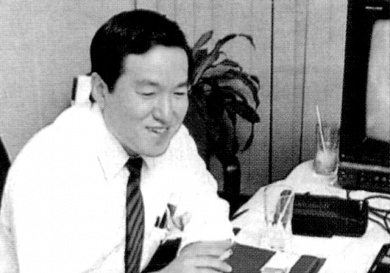
SEGA Hardware Architect: Hideki Sato
The very way the Saturn was created caused rifts between SoJ and SoA. And the rest is history.
There is often confusion about the 'SEGA Away Team' being involved in Saturn hardware development. This was not the case. This teams remit was for creating games in North America such as Bug! and not the console itself. They have a rather cool Trek-inspired logo.
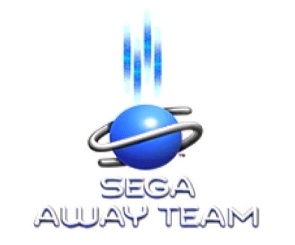
SEGA Away Team
Regional Histories in Brief
Japan
Launched: November 22nd 1994 Available Titles (5): Mahjong Goku Tenjiki, Tama (ball rolling puzzler), WanChai Connection (FMV Murder Mystery Interactive game), Myst (port) and Virtua Fighter.
The launch was a massive success for SEGA despite the steep asking price of 44800 yen (about $490). Pre-orders had sold out two weeks prior to launch. At least 170,00 consoles had sold in its first day.
The other launch titles were of little note as Virtua Fighter – which in Japan was elevating from colossal arcade hit to a phenomenon at the time of the consoles launch – was packed in and although suffered some obvious graphical imperfections - was the flagship title that everyone wanted. Outside of Japan, import reviews were incredibly high scoring for the game. For more info check out the Virtua Fighter Feature.
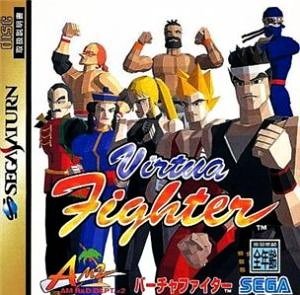
Japanese Case
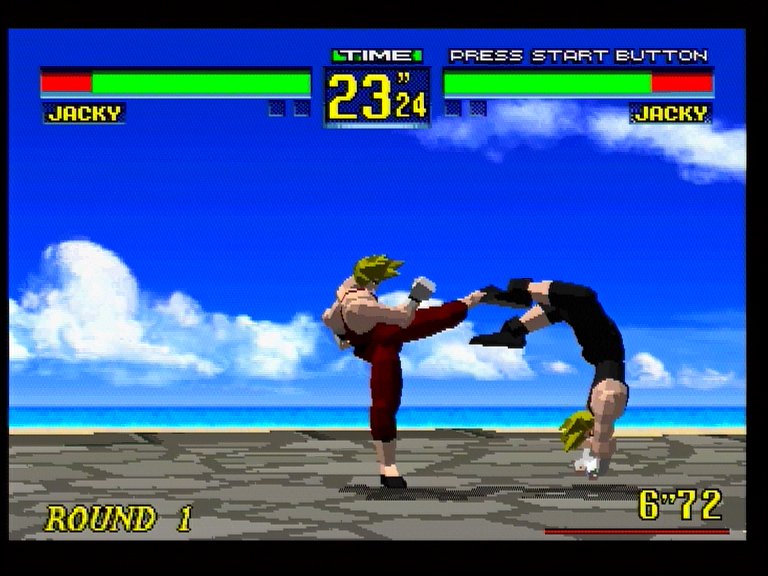
Virtua Fighter
Two weeks later the Playstation launched with 8 games available with the flagship being Ridge Racer. Whilst it had a slightly lower price there was no game included making it more expensive overall. Sony's name in the gaming industry was tiny whereas SEGAs was not necessarily a heavyweight in consoles but stood for cutting edge arcade experiences.
By the end of 1994 (first month) – SEGA claimed 500,000 consoles sold giving the system a great start.
During this period, the Super 32X had launched and though had the potential to steal some potential new Saturn owners – it came and went with hardly anyone noticing.
1995
By March 600,000 consoles had sold upping to 1 Million by June. SEGA marked the milestone with a 'Campaign Box' giving a price drop and including Virtua Fighter Remix – an improved game to address some of the shortcomings of the original with gamers with the original version eligible for a free copy.
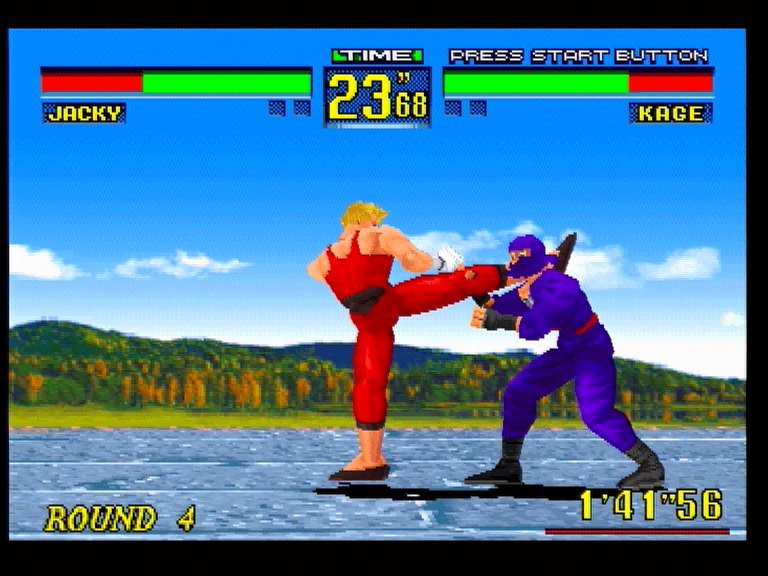
Virtua Fighter Remix
During 1995, Sony had started to overtake but in Christmas of that year the Saturn became the biggest seller again with three of SEGAs massive arcade games driving sales: SEGA Rally Championship. Virtua Cop and Virtua Fighter 2. These came to be known as 'The Big Three'. Other Model 2 conversions formed the backbone of the Saturn's library.
Whilst the Saturn had now started struggling big time in the West it was thriving in Japan with the likes of Virtua Fighter 2 becoming a million selling title. Not only was this another arcade smash-hit but the console port was of the highest quality earning critical acclaim showing exactly what the console was capable of. Whilst 90% arcade perfect, it ran at a super-smooth 60FPS and in the Saturn's high-resolution mode – something unmatched through the whole 32-Bit era.
1996
Sales in early 1996 suggested some 2.2 million consoles had sold accounting for more than 50% of the total Saturn's sold worldwide.
March 22nd saw the release of a cheaper revised console – white edition – for 20,000 yen. Another surge in sales followed meaning supply outstripped demand. This surge is attributed to the milestone of making (then) 'modern' gaming affordable. This new price made the console cheaper than the 6 year old Super Famicom and games on CD-ROM were slightly cheaper than their cartridge equivalents.
In September, another competitor entered: The Nintendo 64 (N64). Surprising to most, it failed to create any significant momentum in sales after the initial fanfare of Super Mario 64.
By the end of 1996, the Saturn had managed to maintain a marginal lead over competitors.
1997
Early in the year some 5 Million consoles had sold and this would be the Saturn's busiest year - and this was crazy. Some 351 games were released in that year! equating to more releases than the other markets in the consoles' entire lifetime. Some of the titles released in this year would fuel a new burgeoning import market in the US and Europe.
Sony finally overtook in January supported by Squaresoft (having being exclusive) launching Final Fantasy VII and it becoming a massive hit. For context, take a look at the recent remastering buzz of the game.
By the middle of 1997 – the divisive internal situation at SEGA began to impact on the console and a failed merger with Bandai was getting SEGA some bad press.
Virtua Fighter 3 had been released in the arcades back in 1996 and quickly dominated like its predecessors and was a showcase for SEGAs new Model 3 arcade board keeping with tradition and demonstrating jaw-dropping visuals. It was obvious that the Saturn was in no way going to come close to reproducing this. It was promised for release and would continue to appear on upcoming release lists until mid-1998 but it never materialized. Then rumors began swirling of a 'Saturn 2' – a possible upgrade – with no basis in fact which the market did not need and something SEGA had already tried twice with bad results.
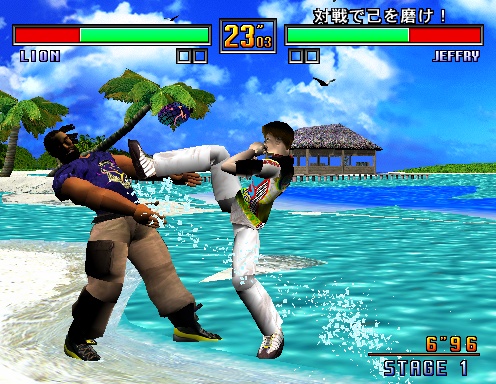
Virtua Fighter 3 (Arcade/Model 3)
Currently has imperfect graphics emulation.
In the deluge of releases were outstanding ports of Capcom's and SNK's 2D arcade hits of the day. Made possibly only by the cartridge port on the Saturn allowing extra RAM contained in a dedicated cartridge. This reduced the loading times and allowed for better looking games with more frames of animation. The Saturn became the ideal machine for arcade conversions. Unfortunately, hardly any of these games made it to the West where the Saturn was disappearing fast. The Japanese market was also the home to a number of niche titles such as dating simulators.
As with SEGA tradition, the arcade board derived from the Saturn's internals, the Saturn Titan Video (ST-V) – saw near perfect arcade conversions from SEGA arrive on the console along with third-parties games such as Soukyugurentai from Raizing.
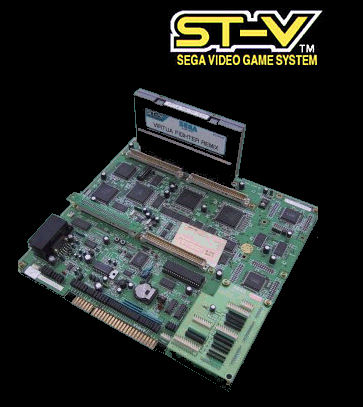
ST-V Arcade Board
The Saturn had become the platform for more dedicated gamers and sold much more software whereas the Playstation catered for new and casual gamers who bought less games.
1998 to 2000
SoJ, unlike the other territories who had given up, began a new marketing campaign fronted by the character Segata Sanshiro. Surprisingly it created a cult following and a renewed interest powering the console for a few more years. Segata got rewarded by appearing in his own game eventually doing what he did in the marketing campaign: punishing those not playing on their Saturn with Judo throws.
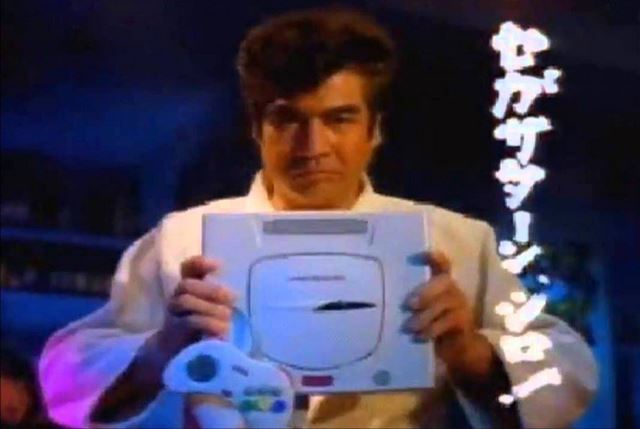
Segata Sanshiro (Advert)
By spring N64 sales were starting to overtake Saturn sales even though it would never manage to catchup entirely.
In May, the Saturn's popularity saw seven of its games in the Top 10 sales chart with not a single N64 game amongst them.
In 1998, the almighty Radiant Silvergun from Treasure had become a cult classic in the arcades and ported perfectly to the Saturn and as an exclusive title being another stunning example of the hardware in the right hands. Sakura Taisen 2 (Sakura Wars 2) was the Saturn's last blockbuster title selling over 300,000 in the first week - double that of Tekken 3 on the Playstation. Even though software production was winding down making way for the Dreamcast, over 200 games were still released that year. SEGA had intended the Saturn continue for providing 2D games after the Dreamcast had launched.
Between 1999 and 2000 some 20 games were released including Street Fighter Zero 3 and Final Fight Revenge both highly rated titles from Capcom. This was now two years after the Dreamcast had launched.
The Saturn had become SEGAs most popular platform ever in Japan outstripping the Mega Drive and beating the N64 with the Playstation becoming the dominant machine only towards the end. The vast majority of the software catalogue – some 1000 games - were exclusive Japan.
Last title: Yuukyuu Gensoukyoku: Perpetual Collection released 7th of December 2000 from Starlight Marry. A compilation title of the simulation games of the series.
North America
Launched: May 1995 Available Titles (6): Clockwork Knight, Daytona USA, Panzer Dragoon, Pebble Beach Golf Links, Virtua Fighter, World Wide Soccer (SEGA International Victory Goal Edition)
Until recently, this could have laid claim to the title of most botched console launch ever.
As the Playstation was now proving popular in Japan, SoJ ordered the early launch of the Saturn to the US market in order to gain a foothold before Sony arrived with their machine. Why such a reckless decision? As with the previous console war, North America was again to be the main battleground and the Japanese were confident (indeed overconfident) with their success back home.
Despite resistance from SoA and SoE rightly stating that there was insufficient software as most of it was still in development, the launch was brought forward from September to a notorious announcement at the very first CES in 1995. Tom Kalinskes Keynote Address surprised the attendees that the Saturn and six games was available that very day, for the price of $399.
As a result, there was no marketing campaign, key retailers/distributors were alienated as only four were selected in the rush and the high price did not help either. The six games initially available were all published by SEGA. Relations with third-party developers was also damaged.
Sony stole the show with the brief response of "$299" for the upcoming Playstation launch into North America to raucous applause.
SEGA could only supply some 30,000 consoles for the surprise launch and demand greatly outstripped supply. As a result, similar amounts would get shipped to various parts of the country every few weeks but were selling well.
'Saturnday' on the 2nd September would be when the system was available nationally and sales were encouraging despite the disappointing games library. Only two more games had become available and failed to impress gaming critics.
The system was supplied with a different controller designed to accommodate bigger 'western hands' which did not have the same quality as the Japanese version and felt odd.
Sony quietly observed the mistakes SEGA had made. They bolstered third-party support and drew up a strategy. The Playstation launch quickly redefined what a console launch would be breaking records though founded on Namco's Ridge Racer rather than any game of their own, and it highlighted the Saturn's weak situation.
Less than 100,000 consoles had sold before the launch of the Playstation – far lower than SEGA anticipated. Four months head start accounted for very little. SoJ had banked on Virtua Fighter to drive sales like it did back home, but the game failed to resonate in the US and it seemed gamers held back to see what Sony had to offer.
For the month remaining after 'Saturnday' came a three game bundle giving Clockwork Knight, Worldwide Soccer and Virtua Fighter Remix (VF:R) in addition to the original Virtua Fighter already in the box. VF:R had to be requested via post after registering their console and SEGA made the same gesture as in Japan and VF:R was offered free to people having already bought a console and registered before now.
In the face of seemingly superior competition the Saturn's price was dropped to $299.99 in the Autumn ($349.99 for the VF:R bundle).
Before Christmas, SEGA dropped some of the biggest arcade hits that had propelled the system to new heights in Japan being SEGA Rally Championship, Virtua Cop and Virtua Fighter 2. These demonstrated what could be achieved with the hardware. Still, the new competitor and a surprising comeback from Nintendo with the ageing Super NES meant SEGA were not No 1 for Christmas.
1996
SEGA tried to reduce some losses and streamlined their current platforms to Genesis, Game Gear and Saturn only.
By summer, it was clear the Saturn was struggling. The arcade ports that had made the machine popular in Japan were not enough in North America where arcades had been in decline for a few years.
Still a determined SoA showing they still had the technological edge landed the next major innovation in console gaming: Online Play. The Netlink accessory allowed Email, Internet Browsing and Multi-player Online gaming was launched. Although a costly accessory, it now gave the Saturn similar functionality to an equivalent PC/Mac for substantially less with supporting games such as Duke Nukem 3D and SEGA Rally, but the small Saturn audience did meant it never became popular.
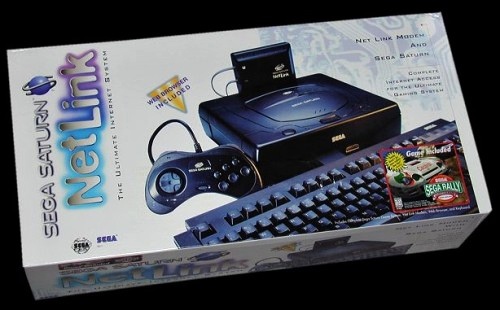
Netlink (US Version)
SoA had also developed the Pluto prototype: a Saturn console with Netlink built-in. It was never announced after NetLink failed to catch on.
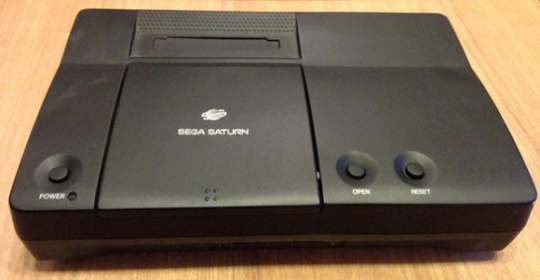
Pluto Prototype Console
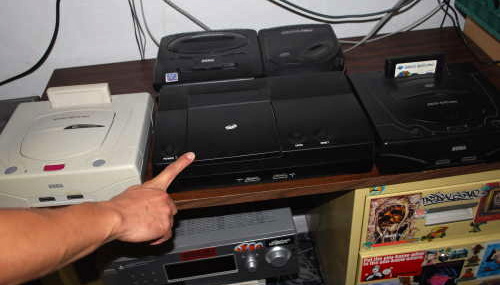
Pluto Prototype Console (with others for size context)
May saw, SEGA slash prices to $199.99 in an effort to stir interest but the move severely damaged their finances as the console was still very costly to manufacture and SEGA made a loss on each sold. In comparison, Sony being an electronics giant could essentially manufacture their console in-house with smaller costs.
SoA then began descending into bedlam. By now, CEO Tom Kalinske who principally drove SoA to greatness with the success of the Genesis had had enough of the botched Saturn strategy and directives from SoJ that made no sense in this market, left SEGA in July. He was followed by SEGA architect David Rosen and then SoJs CEO Hayao Nakayama.
In September, the launch of the N64 with the ground-breaking Super Mario 64 quickly surpassed the Saturn.
Electronic Arts (EA) – a long term ally – saw their 3DO sink and jumped ship for Sony leaving the Saturn without the strong line-up of sports titles that won the North American gamers over in the previous generation. Developers were spooked by the bad press SEGA was getting and combined with the complicated nature of the Saturn's development environment felt it not worth their time investing and slowing releases further.
There was still an obvious hole in the Saturn's line-up: a Sonic game. SEGAs mascot was yet to appear on the console and the much-publicised Sonic X-Treme got cancelled in October, the story of which highlights more internal strife at SEGA. Sonic Team back in Japan were busy creating NiGHTS Into Dreams.
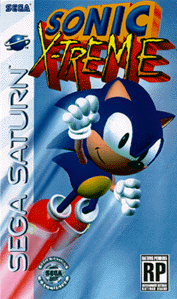 Sonic X-Treme Case Art |
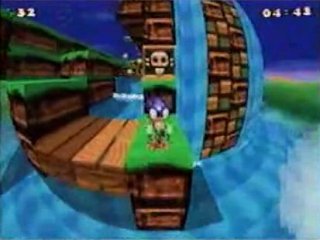 Sonic X-Treme 'Fish Eye' Version |
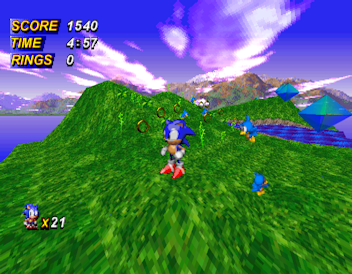 Sonic X-Treme 'Nights Engine' Version |
NiGHTs Into Dreams was released and backed by some marketing was seen as somewhat of an alternate mascot. With its innovative gameplay enhanced by a new controller, it was highly praised by gamers and critics alike and became the Saturn's most successful release thus far.
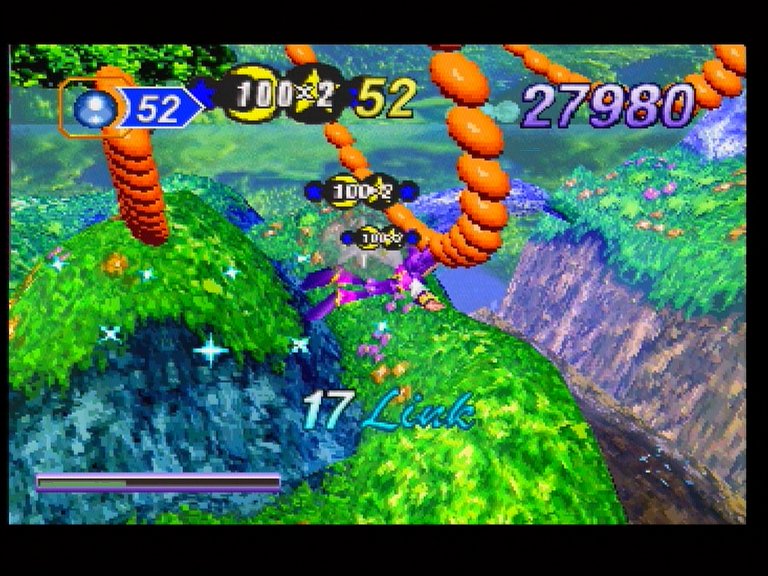 NiGHTS Into Dreams |
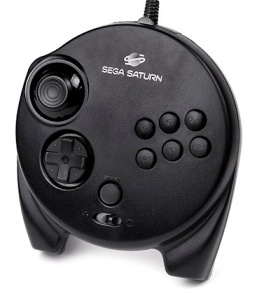 3D Analogue Controller |
But by now, the N64 was looking like the only console that could take on the Playstation. The Saturn although looked on favourably until this point was now all but forgotten about and falling behind quickly.
SEGA tried to make the Saturn more appealing by massively improving the three-game bundle with new first-party games which included heavyweights such as Daytona USA, Virtua Cop and Virtua Fighter 2. The price of top games/new releases was also dropped. This triple pack promotion saw a healthy surge in Saturn sales for approximately 2 weeks.
Another hole in the Saturn's library was the lack of a NFL game for the 1996 season which SEGA consoles had a tradition of hosting. Versions were released on the Genesis and Game Gear but no 32-Bit version of Madden NFL '96 appeared woeful and so the highly praised PlayStation-exclusive NFL GameDay capitalised on the opportunity and sold very well.
Tensions rose within SEGA when SoJ decided to cut off support for all older platforms to concentrate on the Saturn. This seemed like madness on the US turf because the Genesis was still a profitable platform that was still selling well albeit in smaller numbers. SEGA's situation got considerably worse both financially and for customer image.
1996 was the year it all fell apart for SEGA in the West and took the Saturn along with it despite cancelling all their other platforms in favour of it.
1997
Replacing Tom Kalinske was Bernie Stolar (Stolar) from none other than Sony. Clearly SEGA had made major mistakes with the Saturn in both its design and subsequent marketing – and Stolar had very little time for it.

Bernie Stolar
As time passed the Saturn became more and more forgotten simply because there was little activity on the games front thus casual gamer interest evaporated. Popular games released in Japan that were being raved about in the gaming press never made it to the US. This was in part down to Stolar aware the Saturn could now never win on quantity – so quality was to be reinforced hoping this would offset the higher price tag. He held back many titles from localisation believing they would not show the console in the best light as they were not cutting edge being rather RPGs and other 2D based games. SEGA fans to this day dislike him for his 'Five Star Games Policy'.
Whilst there would be few new Saturn adopters those that had already were now being entertained by some outstanding games from both SEGA with more arcade conversions such as Fighting Vipers and Virtual On, and console exclusives such as [Panzer Dragoon II: Zwei] and third-parties who by now were exacting good results from the hardware examples being PowerSlave (Exhumed) from Lobotomy and the only uncensored version of the PC hit Duke Nukem 3D on a console. It also had the distinction of being playable online via Netlink.
By May, decline had continued and defeat was all but conceded with Stolar with his infamous comment ,"Saturn is not our future" at the E3 of that year. It was all that was needed for developers, the media and moreover gamers in the West to abandon the system. SEGA now had the reputation for abandoning platforms early – now for the third time.
By now, something else had happened. Saturn fans realising that their console was out of favour with publishers and the media had begun to band together. The Internet (still primitive by today's standards) would help to create a club of suffering Saturn fans.
The surge of games in Japan now fuelled an import scene. It was the machine for 2D arcade beat'em ups and shoot 'em ups that had been dying genres in the West in recent years but still plenty of gamers wanted them having grown up with them in previous generations. The ability for the Saturn to expand its RAM meant these arcade conversions were way ahead of Playstation ports if one existed at all.
1998
SEGA themselves continued to support the console with the best software they could and this year saw the bittersweet end. The final few titles are some of the most stunning to grace the platform. Their names are now legendary: Burning Rangers, Panzer Dragoon Saga, Shining Force III each becoming some of the most sought after in their English versions.
Last title: Magic Knight Rayearth released on the 30th of July, 1998 from Working Designs.
Europe
Launched: July 8th 1995 Available Titles (4): Virtua Fighter, Clockwork Knight, Daytona USA, SEGA International Victory Goal Edition.
Performance in Europe is difficult to judge but since SoE is here in the UK and dictated policy to Europe so UK market performance is a good barometer.
Dubbed 'Saturnday', with its launch also having been brought forward from an original September launch, and at an insane price of £399 which did include Virtua Fighter. It too included the less pleasant Western controller.
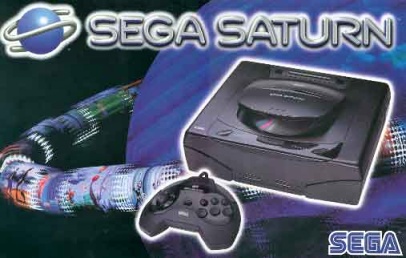
SEGA Saturn European Box
Sales were very slow but there was also a stock shortage potentially fabricated to generate hype. However, there were some bad feelings from the start. SEGA included RGB scart cables rather than traditional RF cables because they estimated that a high proportion of TVs had the connection and justified the decision by stating that if gamers were investing that much money in a console then you would want the best picture. Although SEGA offered RF cables for free via post, to play your console that day would cost approx. £25 more.
Panzer Dragoon followed shortly afterwards and the Official SEGA Magazine went all out to bestow the virtues of this multi-media gaming machine with its support of Video CD and Photo CD which was still very new in Europe and the other formats as standard.
There was plenty of hype surrounding the Playstation as Sony was putting much more effort into capturing the European market putting it on an equal footing with the other territories. The launch was now only weeks away (September) and many SEGA gamers were still happy with their Mega Drives, the Mega-CD and 32X had come and gone and not particularly interested in what the Saturn was currently offering.
1996
By Spring the Saturn now sold for £249.99 which was £50 cheaper than the Playstation. Sales improved further when the offer was later extended to include 3 games the options of which varied between the retailers but all included Virtua Fighter 2.
By May, Sony estimated they had sold 100,000 consoles Vs 70,000 Saturn's but here was no proof.
The delayed launch of the N64 until 1997 befitted both companies giving them the Christmas market to compete over.
This market was suffering essentially the same fate as North America. Lack of games early on. It took ages for decent titles to arrive, the lateness of any Sonic title (a good one would have been better) and none of the raved about games in the gaming press never made it out of Japan also.
The Model 2 Saturn with its improved controllers launched but the result was the Playstation outselling the Saturn by a massive amount – some 6:1 by some reports.
The launch of NiGHTS Into Dreams got the system some attention because it was a game that was actually advertised in the gaming press and on TV but people in Europe were still more than happy to stick with their Mega Drive's which still had some excellent titles being released albeit the final ones.
By October the Christmas anticipated-killer game Sonic X-Treme which had been widely publicised in the gaming press was cancelled due to development issues. In its place was Sonic 3D (which also got a Mega Drive/Genesis release) which although not a next-gen Sonic game and did not score well in reviews was still a mascot game was still needed as Sonic was still very popular in Europe with releases having continued on the Master System.
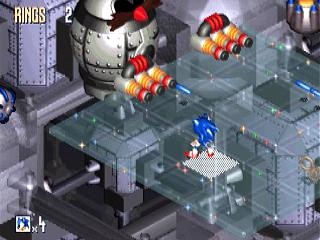
Sonic 3D: Flickies Island
By now, it was clear the Saturn was struggling. SoE cancelled plans to launch the NetLink accessory and the Video CD and Photo CD formats had no take up making the Saturn 'just a console' but with minor appeal.
The Saturn finished in second place and SEGA announced the cancelling of all its other platforms for it.
1997
The Official SEGA Magazine was promptly renamed to Official SEGA Saturn Magazine as it was the only platform now active.

Official SEGA Saturn Magazine
Mid 1997, the Saturn's fate in Europe was playing out much like in North America. Its price had been dropped to £99.99 with games around £19.99 but earning little interest of gamers.
The N64 was gaining ground and third-party developers were reconsidering their projects even the UK ones who had been a strong supporter of SEGA in this territory they had made a stronghold.
The console was already beginning to vanish in retail as shelf space began to shrink. After coming second in the previous Christmas a major retailer no longer stocked consoles making more room to Playstation's.
SoE had seemingly conceded defeat also with quotes coming from high level management echoing SoA's thoughts hinting the Saturn being abandoned imminently. Then developers, publishers and the gaming press did just that.
Similar to the North American market, gamers quickly began to import the highly rated games they were not getting released. Importing began to grow and Official SEGA Saturn Magazine offered some coverage of this scene which was a most unusual act for an official publication.
By November it was estimated that some 450,000 had been sold in the UK. For a SEGA stronghold it was a calamity.
1998
By 1998, it was clear the Saturn had bombed in the European market only not as badly as the North America despite the parallels. Across Europe, in France, Germany and Spain, the playout was similar. Prices were dropped year on year but no major boost in sales.
The last few games to be released would be done so in limited numbers but again these were some of the best the system had to offer and like their US counterparts these English versions became highly sought after later on.
Support continued from official SEGA Saturn Magazine until November.
Last title: Deep Fear June 1998 from SEGA (AM7) and System Sacom.
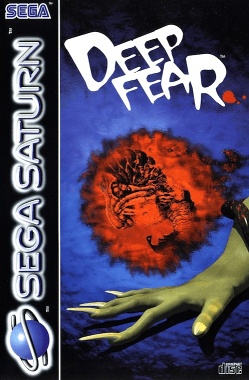
Deep Fear
Legacy
Ultimately, sold Approx. 9 million with the majority being in Japan.
It is odd to think that the world leaders at the time launched a console that ruined their grip of two major markets; North America and Europe only to win their homeland. As a result, the Saturn has very much two identities: one of the greatest hardcore gaming consoles to-date, or nothing of interest to the casual gamer other than just another abandoned platform.
The Saturn lost the 32-Bit war soon after it started due to poor decisions and unexpected rivals. From the start it probably imported some negativity from the 32X disaster and possibly the Mega-CD/SEGA-CD also. A high price made consumers consider the Playstation and as third-party developers were finding difficulties in making games they opted for the Playstation and thus the Saturn did not build up a decent game library quickly enough. Although this would be different in Japan and for SEGA supporting the platform themselves, it took too long for the real gems to arrive.
The Saturn's history is particularly painful to SEGA fans. From its divisive inception and knowing what potentially could have been from the alternatives proposed, through each misunderstood management decision, and learning about each and every great game they never played or never heard about at the time, it can make ardent fans go through a range of emotions. Saturn owners tend to be the staunchest SEGA fans (trust me I know).
It was clear that SEGA was in turmoil internally and confirmed by journalists over the years. This is often centred on a state of corporate arrogance that became too much for key staff. For one delving deeper into SEGAs corporate machinations, it could be said the Saturn's playout in the North America and Europe is a prism for what was going on at SEGA. The Japanese dictating policies for markets they did not necessarily understand.
Massive internal rifts between SoJ and SoA split the company and many valuable games such as Sonic X-Treme and Sakura Taisen did not get a release in Western markets where they were so drastically needed. But, would any of the awful management decisions have made much of a difference? It may have mitigated the outcome somewhat but unlikely to have changed it. Gaming had changed, and quickly. It's pretty easy to see why the Saturn did not do so well in the West. Polygons were now the norm and the Saturn not built around them, and by the time the proof was there that it actually could – it was too late.
That said however, the SEGA Titan Video (ST-V) arcade board based on Saturn hardware managed to perform very well and allowed SEGA to maintain their dominant position in the arcades. Many titles will arrive on the Saturn almost arcade perfect.
The lessons for the industry at large seem to be keep architecture and development simple. Almost all developers had problems writing games for the complex architecture. Whilst for the most part it was what programmers wanted - that is, a machine where each part could be programmed to perform a specific task - unless you had some real experience in writing games in that paradigm it was difficult to code for. SEGA themselves recognised the issues hence the development of their SEGA Graphics Library designed to assist creating 3D games more quickly and easily though still relatively difficult. Contrast this to the easier environment and friendlier face Sony provided and the rest is history. This blighted the consoles existence causing a game draught early and then with many developers opting to use only a small amount of the hardware's capability. It was estimated that only 1 in 100 programmers (of the time) really knew how to tap the machine. Perhaps moreover, the changes in the industry meant there was no longer the time to learn the intricacies of a new piece of hardware. Everything in the mid-90s seemed to accelerate.
SEGA thankfully learnt this lesson going forward.
Another lesson must be: Never attempt a surprise launch!
In creating the Playstation, Sony had created a new type of gamer: The Casual Gamer - a growing market to this day. In contrast, Saturn fans were more a smaller group and loyal and its created the Hardcore Gamer whom would help fuel a burgeoning import market.
Despite these points, the Saturn has some of the best console games ever thanks mostly to SEGA themselves and Capcom and SNK who bought plenty of their best arcade games over perfectly. It also has the distinction of being the first console with Internet play via Netlink and the introduction of analogue controllers.
Now the console enjoys an iconic cult status with a great deal of affection offering an alternative to the mid-90s favourite gaming types that were overlooked at the time. And a platform whose history still manages a few surprises such as the prototypes of Project: Pluto, Shenmue concept demos and specialised system boot discs.
As Retro Magazine wrote, "Gamers of the Nineties may have thought that SEGA was on another planet, but today we can appreciate the Saturn from being worlds apart from its competition".
The SEGA Saturn Today
So Today, hardcore Saturn fans still have their consoles setup still playing through games they are most likely learning about. This is becoming tricky as many modern TVs are dropping the SCART connector. A good alternative are projectors with S-Video.
Real hardware is still easily obtainable. As yet there have been no official hardware re-releases from SEGA or their third-party manufacturers. It has become some of the most collectible SEGA hardware in existence and thus potentially the most expensive. There are some rare third-party versions of the hardware and the later PAL games fetch high prices as there were limited copies.
Effort has been made by talented enthusiasts to preserve the software as the CD-ROMs are over 25 years old now and cannot be copied easily due to physical copy protection. Hardware mods can provide access to a SDCard connected to the CD-ROM drive or via the Video CD cartridge port where games (images of the CD-CROMs) are stored.
The system has been emulated to a reasonable degree on the PC making many games playable though a few are still not. A modern PC with a decent graphics card should suffice and there are USB Saturn controllers available.
Very few of its original games have been re-released which in turn makes them very rare though there have been some ports to other platforms. It has been implied that some games will be released under the recent SEGA Forever brand though this has yet to happen and unlikely due to the complexity of Saturn emulation.
Plenty of community websites exist dedicated to the system offering discussions, historical finds, reviews and other content such as soundtracks, game hacks and prototype/unreleased games now surfacing.
dA small homebrew development scene which has some basic games and utilities with a focus of creating better development tools for homebrew is active. For example, the Jo Engine is helping new homebrew developers. There are some ambitious projects such as Sonic Z-Treme by the very talented Maxime-XL2 (which has a downloadable demo available) with early work being very impressive pushing the Saturn further than most commercial games ever did.
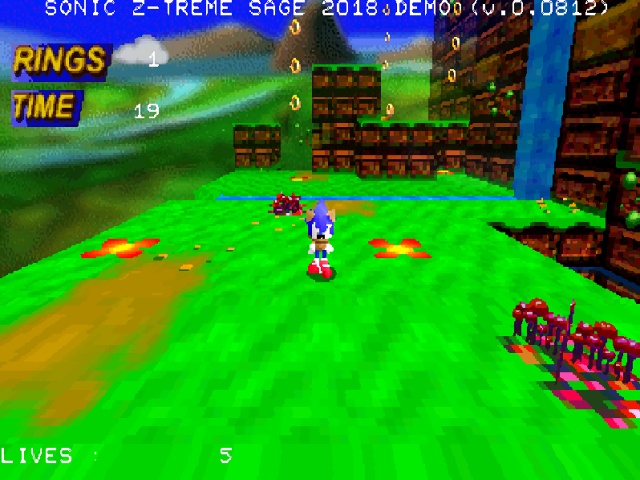
Sonic Z-Treme
Coding competitions ran up until approx. 10 years ago with some impressive results – though a good number of them were for creating emulators and utilities. Check Youtube for some examples.
For much more content for SEGA Saturn zen - check out some if the URLs in the Links section below.

